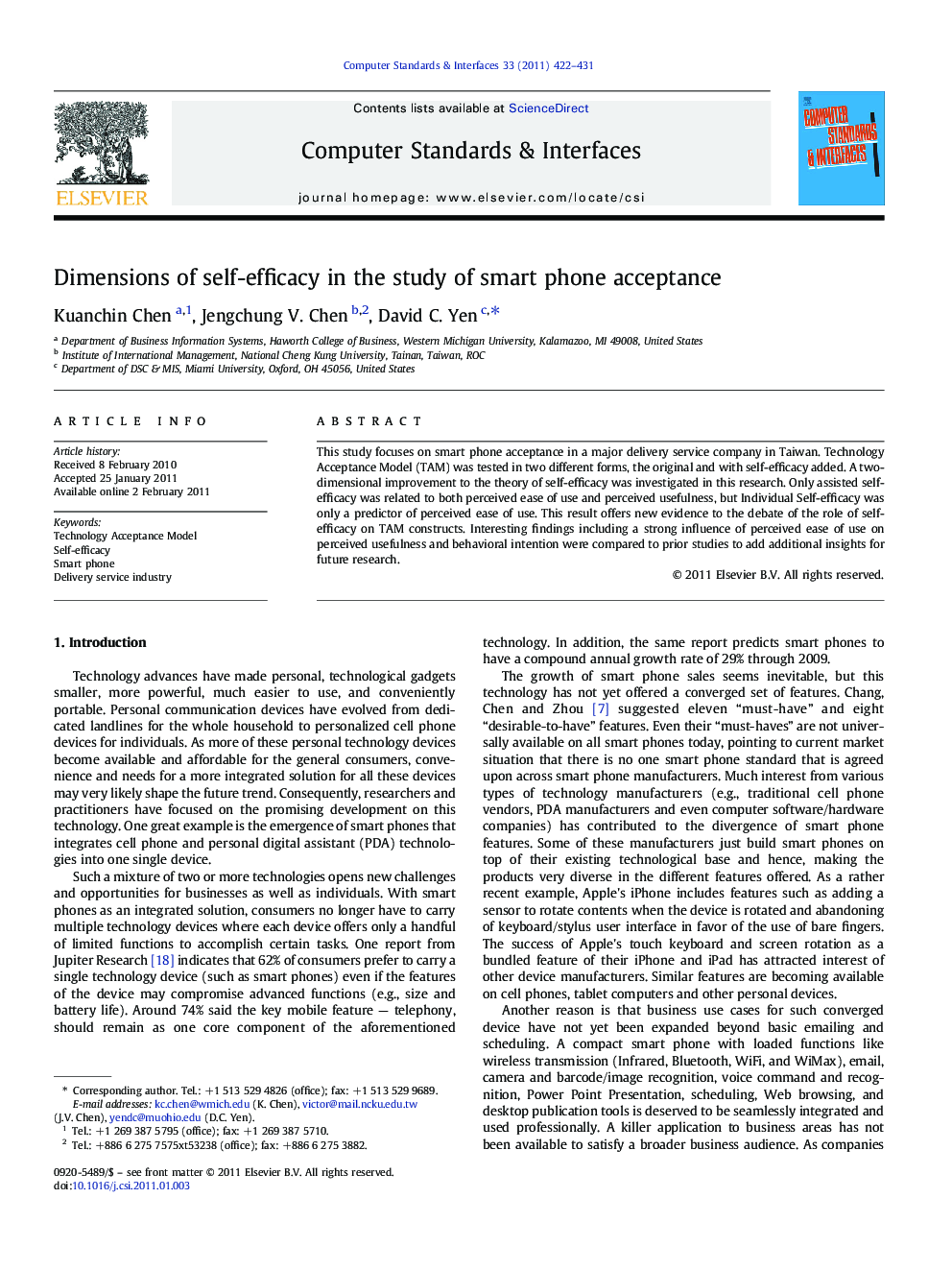| Article ID | Journal | Published Year | Pages | File Type |
|---|---|---|---|---|
| 454349 | Computer Standards & Interfaces | 2011 | 10 Pages |
This study focuses on smart phone acceptance in a major delivery service company in Taiwan. Technology Acceptance Model (TAM) was tested in two different forms, the original and with self-efficacy added. A two-dimensional improvement to the theory of self-efficacy was investigated in this research. Only assisted self-efficacy was related to both perceived ease of use and perceived usefulness, but Individual Self-efficacy was only a predictor of perceived ease of use. This result offers new evidence to the debate of the role of self-efficacy on TAM constructs. Interesting findings including a strong influence of perceived ease of use on perceived usefulness and behavioral intention were compared to prior studies to add additional insights for future research.
Research Highlights► Smart phone adoption is verified through modified technology acceptance model. ► The two types of self-efficacy shed lights on the dimensionality debate. ► Profile analysis shows that self-efficacy greatly affects constructs relationship.
